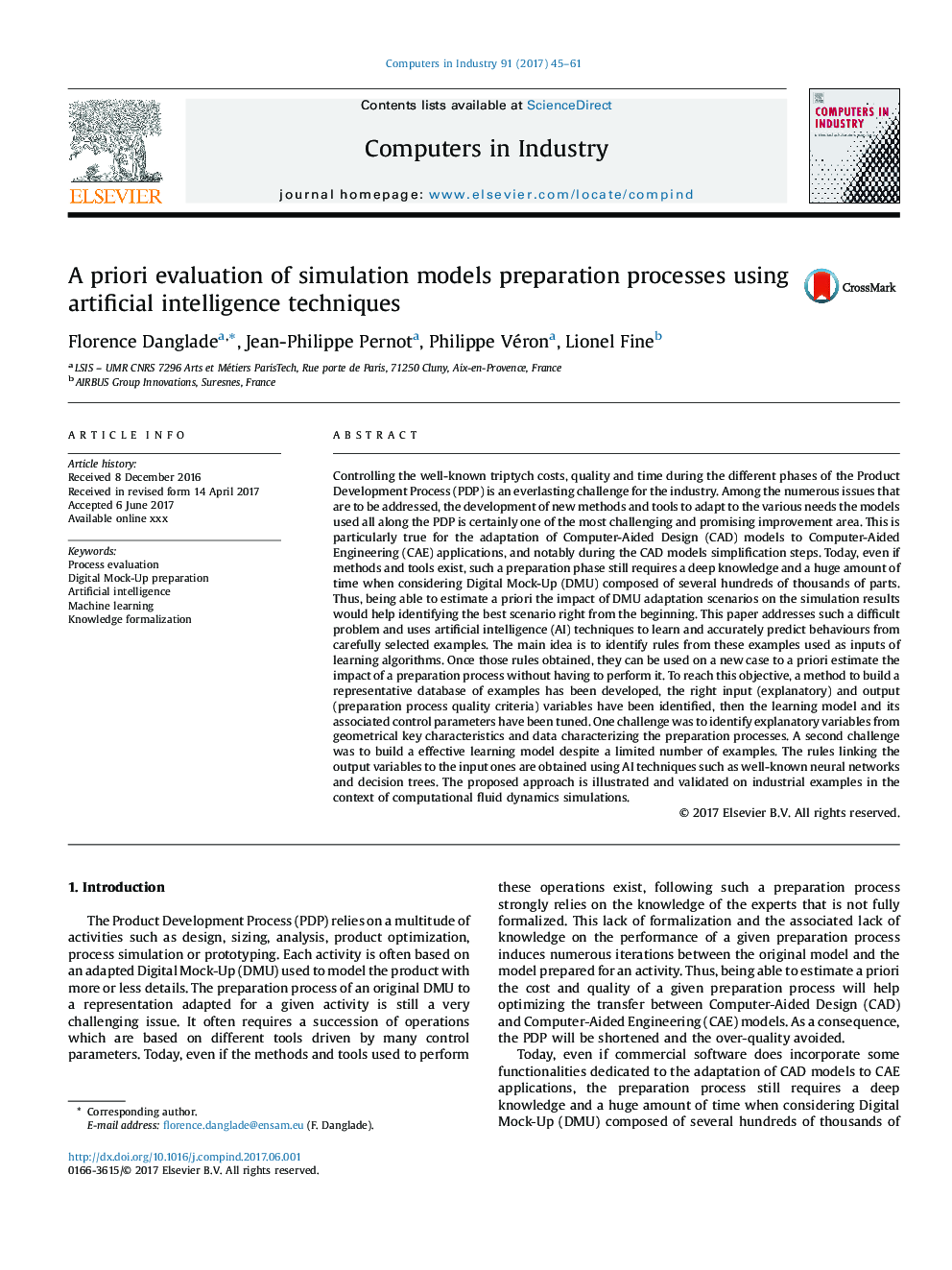| Article ID | Journal | Published Year | Pages | File Type |
|---|---|---|---|---|
| 4965521 | Computers in Industry | 2017 | 17 Pages |
Abstract
Controlling the well-known triptych costs, quality and time during the different phases of the Product Development Process (PDP) is an everlasting challenge for the industry. Among the numerous issues that are to be addressed, the development of new methods and tools to adapt to the various needs the models used all along the PDP is certainly one of the most challenging and promising improvement area. This is particularly true for the adaptation of Computer-Aided Design (CAD) models to Computer-Aided Engineering (CAE) applications, and notably during the CAD models simplification steps. Today, even if methods and tools exist, such a preparation phase still requires a deep knowledge and a huge amount of time when considering Digital Mock-Up (DMU) composed of several hundreds of thousands of parts. Thus, being able to estimate a priori the impact of DMU adaptation scenarios on the simulation results would help identifying the best scenario right from the beginning. This paper addresses such a difficult problem and uses artificial intelligence (AI) techniques to learn and accurately predict behaviours from carefully selected examples. The main idea is to identify rules from these examples used as inputs of learning algorithms. Once those rules obtained, they can be used on a new case to a priori estimate the impact of a preparation process without having to perform it. To reach this objective, a method to build a representative database of examples has been developed, the right input (explanatory) and output (preparation process quality criteria) variables have been identified, then the learning model and its associated control parameters have been tuned. One challenge was to identify explanatory variables from geometrical key characteristics and data characterizing the preparation processes. A second challenge was to build a effective learning model despite a limited number of examples. The rules linking the output variables to the input ones are obtained using AI techniques such as well-known neural networks and decision trees. The proposed approach is illustrated and validated on industrial examples in the context of computational fluid dynamics simulations.
Related Topics
Physical Sciences and Engineering
Computer Science
Computer Science Applications
Authors
Florence Danglade, Jean-Philippe Pernot, Philippe Véron, Lionel Fine,
